These days, luxury buyers are researching products more and more before they buy—and not just the products themselves, but the companies who sell them, too. Luckily, this shift means that brands that invest in innovation, creativity, and long-term content assets for their online marketing efforts will reap the rewards.
As the luxury market shifts in both buyer behavior and demographics, a formula of creative marketing techniques and modern digital strategy must take precedence. Today’s luxury brands and their marketing teams must accomplish four goals to be effective:
- Attract attention from social media users
- Offer a compelling mobile experience
- Build trust
- Appeal to a global audience
High-consideration purchases present a challenge to today’s marketers, even those with massive budgets—and yet, innovation is still rare. A 2015 Altagamma-McKinsey report estimates that online sales of luxury goods may triple in the next decade. But approximately 40% of luxury brands still don’t offer their products for sale online.
Regardless of where your brand falls in these statistics, there are steps you can take right now to bring your luxury brand website into the modern age.
360-Degree Photography
Luxury brands have a rich history of high-end product photography for catalogs, advertisements, retail stores, and show rooms. Many brands have transferred these images to their website, the new foundation of luxury marketing—but the photography effort usually stops there.
Since most luxury buyers perform online research before buying at a brick-and-mortar location, brands who use modern photography with rich image displays online will win the customer.
Photography that captures the attention of today’s smartphone user requires more than proper equipment, lighting, and retouching. Photographs on a website are the hook for smartphone users, after all. Combining these images with a luxury marketing strategy that encourages shoppers to pin, like, and opt in with your brand will build help build a steady pipeline of prospects. The best place to begin is 360-degree photography.
Branded Mobile Technology
Branded apps are the future of e-commerce and brand loyalty, but they won’t provide value unless the website drives visitors to click, download, and engage with them. Although today’s luxury prospects aren’t always using their smartphones to buy products, McKinsey estimates that 40% of luxury purchases are influenced by a customers’ digital experience.
But a responsive website is no longer enough to stand out amongst the competition; it’s time to unleash the power of branded platforms.
Look to other industries for inspiration for a branded platform or app. For example: Konica Minolta, an industry leader in business solutions and workflow software, recently launched a Telehealth platform, blending the power of graphics, video, and animation to stand out in the healthcare industry.
Luxury brands who are following suit with apps and interactive content to keep buyers engaged with new product releases, contests, and special in-store events are winning customers.
Video
Video strategies tend to get derailed by “analysis paralysis,” especially when there are multiple decision makers and they are doubtful of the power of video. Brands don’t have jump right into on-location and studio production or commercials if there is hesitation from key decision makers. They can use the power of motion and sound design or even animation to launch professional marketing campaigns.
Video strategy will vary between brands and markets, but creating a lasting impression with sophisticated video and motion design is a must in today’s mobile marketplace. Video performance measurement tools like Wistia can give your brand insight into buyer personas, video engagement, and conversion rates.
Image Diversity
McKinsey & Pew Research Center’s data on luxury market statistics include research from luxury buyers in the United Kingdom, the United States, France, Japan, Italy, and China. The digital age gives luxury brands an opportunity to not only expand their global footprint, but to incorporate a level of diversity and target audience marketing that wasn’t possible with traditional advertising methods.
User location data gives brands the power to target emerging global markets with creative photography and video that displays cultural scenes and backgrounds that are familiar to prospects. Customized photography for different countries and cultures will not only attract a larger digital audience; it will build trust and drive engagement.
Social Media Imagery & Target Marketing
Social media is a powerful tool for luxury brands. Instagram alone gives brands access to over 500 million users, and user demographic data points to a high volume of female millennials who make between $50,000 and $74,999. If your brand doesn’t have product imagery that appeals to this audience, it’s time to make the leap and invest in social media images.
Stunning images that are designed just for social media are a must-have to separate you from the crowd. Partnering with a creative agency can help your brand repurpose existing images and video for multiple outlets, using branding and marketing techniques that will draw fans in and encourage them to like, follow, and share.
Bringing Digital Assets into the Brick-and-Mortar
Customer Journey Data, Imagery, and In-Store Experience
Modern apps and branded platforms have the ability to capture in-store experience data from customer’s mobile devices. Combining the in-store tracking data with a powerful CRM will identify the displays that drew the most attention, as well as the designs and layouts that drove purchases.
Tracking customers as they move through a physical store and syncing up their buying behavior with displays and in-store design gives incredible insight into new digital marketing strategies, feedback for creating new digital signage, and ideas for new virtual reality programs. Once new digital signage is installed, stores can use mobile-sensing technology to identify the signs and messaging that draws the most in-store traffic (Bluefox Count).
Digital Signage and Video Walls
U.S. Consumers now spend 5 hours per day on mobile devices (TechCrunch). When a luxury buyer walks into your store, are you going to lose a sales opportunity because their phone is more interesting than your store? Not if you invest in assets like a video wall or digital signage that incorporates the perfect brand message for that location and environment.
The ROI of Creative Digital Marketing
Identifying an average ROI for luxury brands is difficult; products and pricing vary, the buying cycle is much longer than non-luxury brands, and digital inbound marketing campaigns deliver long-term value to marketing teams that are hard to measure immediately.
Long-term benefits of modern digital marketing techniques include:
- Access to competitive intelligence through integration with CRM Analytics programs
- Measure KPIs to improve conversion rates
- Decrease customer acquisition costs with organic reach and retargeting campaigns that shorten the buying cycle
According to a report from Bain & Co., the U.S. luxury market predicts flat growth or a fall by 2%. If luxury brands want to avoid a state of underperformance, they must meet future customers where they are.
"The younger generation will be key as millennials and Gen Z will represent 45 percent of the global personal luxury goods market by 2025," says Bain. "Still, when analysing behaviours, it is more correct to talk about a 'millennial state of mind,' which is increasingly permeating across all generations and is thus more a psychographic phenomenon rather than a purely demographic one."
If you’re investing in “the millennial state of mind” for your luxury brand digital strategy, be sure to invest in technology and content assets that deliver long-term value.
.png?width=250&height=153&name=CSI-OverskiesRebrand_LOGO-01(smaller).png)

.png?width=100&height=61&name=CSI-OverskiesRebrand_LOGO-01(smaller).png)


.png?width=88&name=CSI-OverskiesRebrand_LOGO-01(smaller).png)



